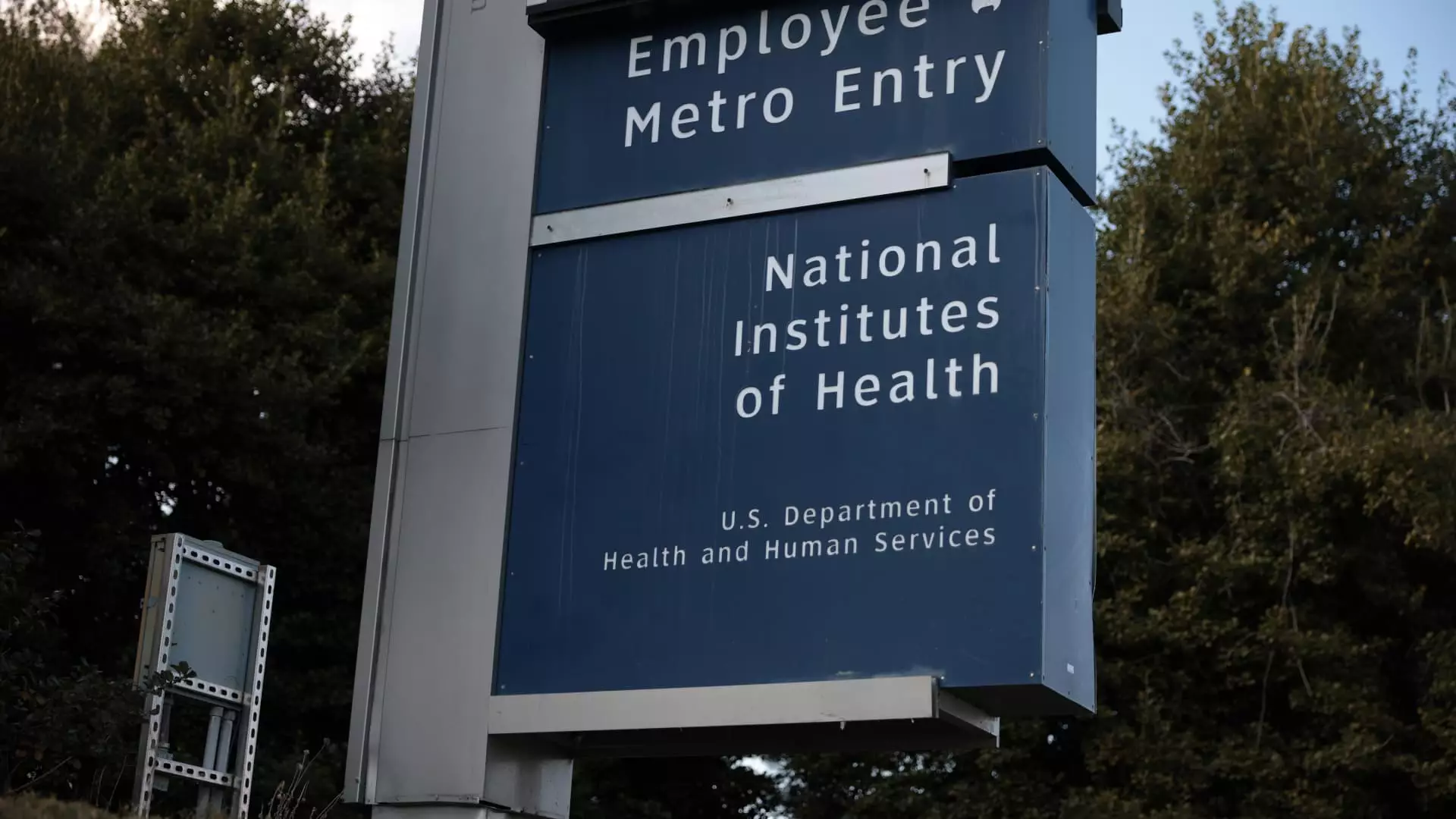In a move that has sent shockwaves through the life sciences community, the Trump administration’s proposal to slash $4 billion from the National Institutes of Health (NIH) threatens to unravel decades of critical research support. By capping indirect costs at a mere 15%, the administration is not merely tightening the purse strings; it is jeopardizing the very infrastructure that sustains research institutions across the nation. While the supposed objective is to save taxpayer dollars, it appears that the consequences will be dire—not just for the institutions directly involved but for the future of academic and governmental research alike.
The NIH budget for fiscal 2024 stands at an impressive $47 billion, making it the world’s largest public funder of biomedical research. Yet, this cap on indirect costs is alarmingly below the industry standard of 27% to 28%, and particularly laughable compared to figures as high as 60% received by prestigious institutions like Harvard or Johns Hopkins. What does this mean in practical terms? Reduced funding translates into diminished facilities, fewer research advancements, and, quite frankly, an erosion of America’s global leadership in scientific innovation.
Repercussions Across the Stock Market
Wall Street’s reaction has been nothing short of catastrophic for life science tools companies, with shares of major players like Illumina and Agilent plummeting significantly. This is not mere speculative concern; it’s a clear indicator that investors perceive these cuts as a death knell for an entire segment of the industry. For companies that depend primarily on government funding, this is especially treacherous territory. Bank of America analyst Michael Ryskin succinctly articulated this threat, noting that a budgetary cutoff could severely limit institutions’ ability to support essential research infrastructure.
In a market accustomed to steady, predictable growth in the life sciences sector, these proposed cuts introduce a level of uncertainty that is both harmful and unnecessary. It is appalling to see that what was once viewed as a robust sector is now vulnerable to external shocks driven by misguided fiscal policies. The potential impact on stocks of companies deeply tied to NIH funding not only harms those firms but signals a broader instability in the life sciences market, which could discourage investment and innovation at a time when they are desperately needed.
Voices of Concern from the Scientific Community
From within the scientific community, rising concerns echo those of financial analysts. Researcher Tara LeGates poignantly notes that these funding cuts are not just about numbers; they equate to real-world implications, such as researchers losing their jobs and the infrastructure necessary for their projects collapsing. “I can have a building with the lights on,” she states, emphasizing the essential role of indirect costs in sustaining research endeavors. If institutions are forced to downsize or shutter facilities due to budget cuts, the ripple effect will be catastrophic—not just for individual scientists but for society’s collective knowledge and advancement.
How tragic it is that bureaucratic fiscal strategies threaten to strip away the resources necessary for groundbreaking research. The notion that this administration prioritizes budgetary expediency over the future viability and sustainability of scientific inquiry is absurd. The underfunding of indirect costs will inevitably lead to a slowdown in progress, with universities restricting hiring and admissions in response to the financial strain. This stalling could result in a generation of researchers being deprived of the opportunities to innovate and explore critical questions facing the country.
Envisioning a Bleak Future for American Innovation
The long-term implications of these cuts will undoubtedly affect the U.S.’s standing in global research and innovation. With increasing competition from countries eager to seize the mantle of scientific leadership, these moves could cripple the American biomedical research system’s ability to lead the world in drug discovery and fundamentally novel innovations. This is not merely a finance issue; this is a matter of national pride and global standing.
Analyst Puneet Souda highlighted this worrying trend, arguing that the impact of cuts could fundamentally shift the landscape of American science. The imminent threat lies not only in immediate job losses or research stalling; it poses a critical risk to America’s long-term economic well-being. By undermining institutions at the heart of biomedical advancement, we risk sacrificing the future not just of American science but of public health and global competitiveness as well.
In the end, it’s essential to take a stand against this shortsighted approach to funding. The health of our scientific community—and, by extension, our society—is on the line. For the sake of our future, we must hold decision-makers accountable to ensure that America retains its unassailable position as a leader in innovation and scientific discovery.

